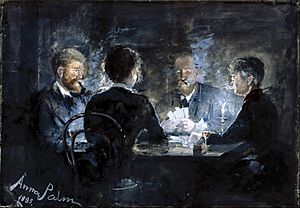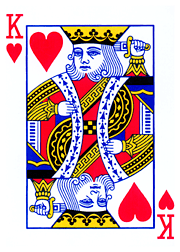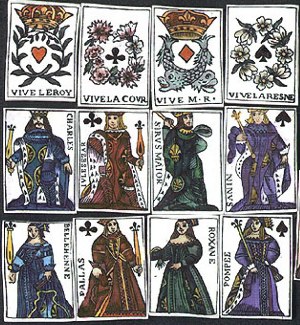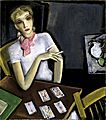Playing card facts for kids
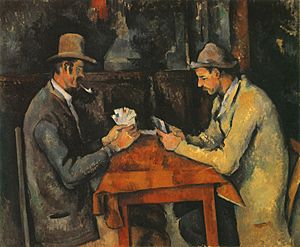
Playing cards are special cards used for many fun card games. You might know games like poker, bridge, blackjack, solitaire, or Go Fish.
A standard deck usually has 52 cards, plus two extra cards called Jokers. Each of the 52 cards has a special symbol called a suit and a number or picture called a rank. There are four different suits and 13 ranks in each suit. The Jokers do not have a suit or a rank.
Contents
Understanding Card Suits
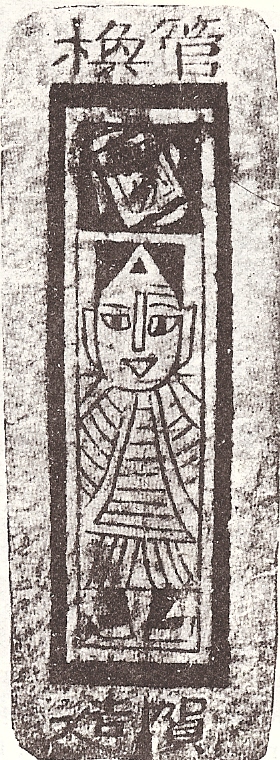
In most places, you'll see these four suits:
- Spades (♠)
- Hearts (♥)
- Diamonds (♦)
- Clubs (♣)
Some countries use different suit symbols. For example, in Central Europe, cards might have acorns, leaves, hearts, and bells. In Spain, Italy, and Latin America, you might find suits like clubs, swords, cups, and coins.
Card Values and Ranks
Each suit has 13 different ranks. These ranks go from lowest to highest:
- 2, 3, 4, 5, 6, 7, 8, 9, 10
- Jack (J)
- Queen (Q)
- King (K)
- Ace (A)
The Ace can sometimes be the highest card, depending on the game.
How Many Cards Are Used?
For many games, the two Jokers are removed from the deck. This means you play with a total of 52 cards.
Sometimes, for certain games like belote or euchre, the deck is made even smaller. It might be reduced to 40, 36, or even 32 cards.
A Brief History of Playing Cards
Playing cards have a very long history! The first playing cards were found in China during the Tang Dynasty in the 9th century.
Cards then traveled to Europe in the early 1300s, likely from Egypt. The early European cards had suits similar to those used in Tarot decks, like Swords, Staves, Cups, and Coins. You can still see these designs in traditional Italian, Spanish, and Portuguese card decks today.
One of the first written records of playing cards in Europe is from 1334 in Spain. It mentions that knights were not allowed to play cards. By 1377, playing cards were widely used across Europe.
How Playing Cards Are Made
The way playing cards are made has stayed pretty much the same for over a hundred years. Cards are usually made from two thin pieces of paper glued together with a special black paste.
Both sides of the card are printed. One side shows the card's face (like the King of Hearts), and the other side has the design for the whole deck. The black paste in the middle is very important. It stops light from shining through the card, so you can't see what's on the other side! This is why cards are sometimes called "pasteboards."
Large sheets of paper, already pasted together, are printed with many cards at once. A machine then cuts out the individual cards, like a giant cookie-cutter. This machine can cut an amazing 36,000 cards every hour! Right after cutting, the edges of the cards are pressed to be extra thin. You might not notice it, but this tiny detail helps the cards slide smoothly when you shuffle them.
Most playing cards in the world (about 97.5%) are made from printed paper. Plastic cards were invented in the 1930s. They last longer than paper cards, but they make up only a small part of the market.
Images for kids
-
Card players in 18th Century Venice, by Pietro Longhi.
-
The Spielkartenfabrik Altenburg playing card factory in Altenburg, Germany, June 2013.
See also
 In Spanish: Baraja para niños
In Spanish: Baraja para niños


